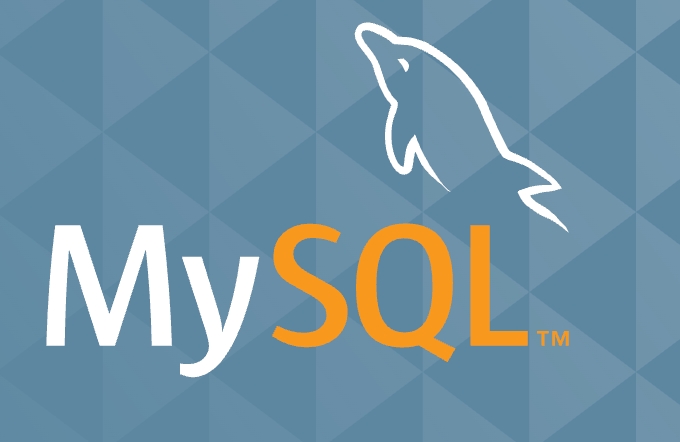Building a Scalable MySQL Backend for Mobile Applications
Jul 25, 2025 am 02:08 AMTo build a scalable MySQL backend for a mobile app, start by using proper indexing selectively, such as on WHERE, JOIN, and ORDER BY columns, and avoid over-indexing to maintain write performance. Next, normalize your schema initially to reduce redundancy, then selectively denormalize for performance in read-heavy scenarios, such as caching joined data or precomputing values. Then implement replication, like master-slave setups, to distribute read and write loads, and consider using proxies like ProxySQL for query routing. Additionally, optimize connection management by using connection pooling, setting idle timeouts, and minimizing new connections per API call, while leveraging caching tools like Redis to reduce database load.

當(dāng)你're building a mobile app with MySQL as the backend, scalability isn't just a nice-to-have—it's essential. Mobile apps can scale fast, and if your database isn't ready, you'll run into performance issues, downtime, or both.

Here’s how to set up a scalable MySQL backend without overcomplicating things.
Use Proper Indexing (But Don’t Overdo It)
Indexing is one of the most effective ways to speed up queries. Without it, searching through large tables becomes slow, especially as your user base grows.

- Always index columns used in
WHERE,JOIN, andORDER BYclauses. - Avoid indexing every column—this can slow down write operations and waste disk space.
- Consider composite indexes when you frequently query multiple fields together.
For example, if you often search users by email and phone number together, a single index on (email, phone) can be more efficient than two separate indexes.
Also, don’t forget to analyze your queries using EXPLAIN to see whether indexes are being used properly.

Normalize First, Denormalize When Necessary
Start with a normalized schema to avoid data redundancy and keep things clean. But as your app scales, some read-heavy operations might benefit from selective denormalization.
Common cases:
- Caching frequently accessed joined data into a separate table
- Storing precomputed values instead of calculating them on each request
- Keeping a copy of related data to reduce JOINs
Just be cautious—denormalization introduces complexity in keeping data consistent. Only do it where the performance gain clearly outweighs the maintenance cost.
Plan for Replication and Load Distribution
As your app gains traction, a single database server won’t cut it anymore. That’s when replication comes in handy.
Set up a master-slave replication:
- The master handles writes
- One or more slaves handle reads
This spreads the load and improves availability. You can also use replication for backups and failover scenarios.
If you’re expecting high traffic, consider using a proxy like ProxySQL or MaxScale to automatically route queries to the right server based on type or load.
And yes, this works even if you're running everything in the cloud. Most cloud providers offer managed MySQL services that support replication out of the box.
Design for Connection Management
Mobile apps often make short, frequent requests. If not handled well, connection spikes can overwhelm your database.
Some tips:
- Use a connection pool on the backend side
- Set reasonable timeouts for idle connections
- Avoid opening a new DB connection per API call
Also, be mindful of how many simultaneous connections your MySQL instance can handle. You can adjust max_connections, but it’s better to optimize usage rather than increase limits blindly.
Another trick: cache results for common queries using Redis or Memcached. This reduces the number of direct hits to MySQL.
That’s basically it. Building a scalable MySQL backend doesn’t have to be overly complex, but it does require thinking ahead about how your app will grow. Get the basics right—indexing, structure, replication, and connection handling—and you’ll save yourself a lot of headaches later.
The above is the detailed content of Building a Scalable MySQL Backend for Mobile Applications. For more information, please follow other related articles on the PHP Chinese website!

Hot AI Tools

Undress AI Tool
Undress images for free

Undresser.AI Undress
AI-powered app for creating realistic nude photos

AI Clothes Remover
Online AI tool for removing clothes from photos.

Clothoff.io
AI clothes remover

Video Face Swap
Swap faces in any video effortlessly with our completely free AI face swap tool!

Hot Article

Hot Tools

Notepad++7.3.1
Easy-to-use and free code editor

SublimeText3 Chinese version
Chinese version, very easy to use

Zend Studio 13.0.1
Powerful PHP integrated development environment

Dreamweaver CS6
Visual web development tools

SublimeText3 Mac version
God-level code editing software (SublimeText3)
 Establishing secure remote connections to a MySQL server
Jul 04, 2025 am 01:44 AM
Establishing secure remote connections to a MySQL server
Jul 04, 2025 am 01:44 AM
TosecurelyconnecttoaremoteMySQLserver,useSSHtunneling,configureMySQLforremoteaccess,setfirewallrules,andconsiderSSLencryption.First,establishanSSHtunnelwithssh-L3307:localhost:3306user@remote-server-Nandconnectviamysql-h127.0.0.1-P3307.Second,editMyS
 Analyzing the MySQL Slow Query Log to Find Performance Bottlenecks
Jul 04, 2025 am 02:46 AM
Analyzing the MySQL Slow Query Log to Find Performance Bottlenecks
Jul 04, 2025 am 02:46 AM
Turn on MySQL slow query logs and analyze locationable performance issues. 1. Edit the configuration file or dynamically set slow_query_log and long_query_time; 2. The log contains key fields such as Query_time, Lock_time, Rows_examined to assist in judging efficiency bottlenecks; 3. Use mysqldumpslow or pt-query-digest tools to efficiently analyze logs; 4. Optimization suggestions include adding indexes, avoiding SELECT*, splitting complex queries, etc. For example, adding an index to user_id can significantly reduce the number of scanned rows and improve query efficiency.
 Handling NULL Values in MySQL Columns and Queries
Jul 05, 2025 am 02:46 AM
Handling NULL Values in MySQL Columns and Queries
Jul 05, 2025 am 02:46 AM
When handling NULL values ??in MySQL, please note: 1. When designing the table, the key fields are set to NOTNULL, and optional fields are allowed NULL; 2. ISNULL or ISNOTNULL must be used with = or !=; 3. IFNULL or COALESCE functions can be used to replace the display default values; 4. Be cautious when using NULL values ??directly when inserting or updating, and pay attention to the data source and ORM framework processing methods. NULL represents an unknown value and does not equal any value, including itself. Therefore, be careful when querying, counting, and connecting tables to avoid missing data or logical errors. Rational use of functions and constraints can effectively reduce interference caused by NULL.
 Performing logical backups using mysqldump in MySQL
Jul 06, 2025 am 02:55 AM
Performing logical backups using mysqldump in MySQL
Jul 06, 2025 am 02:55 AM
mysqldump is a common tool for performing logical backups of MySQL databases. It generates SQL files containing CREATE and INSERT statements to rebuild the database. 1. It does not back up the original file, but converts the database structure and content into portable SQL commands; 2. It is suitable for small databases or selective recovery, and is not suitable for fast recovery of TB-level data; 3. Common options include --single-transaction, --databases, --all-databases, --routines, etc.; 4. Use mysql command to import during recovery, and can turn off foreign key checks to improve speed; 5. It is recommended to test backup regularly, use compression, and automatic adjustment.
 Calculating Database and Table Sizes in MySQL
Jul 06, 2025 am 02:41 AM
Calculating Database and Table Sizes in MySQL
Jul 06, 2025 am 02:41 AM
To view the size of the MySQL database and table, you can query the information_schema directly or use the command line tool. 1. Check the entire database size: Execute the SQL statement SELECTtable_schemaAS'Database',SUM(data_length index_length)/1024/1024AS'Size(MB)'FROMinformation_schema.tablesGROUPBYtable_schema; you can get the total size of all databases, or add WHERE conditions to limit the specific database; 2. Check the single table size: use SELECTta
 Handling character sets and collations issues in MySQL
Jul 08, 2025 am 02:51 AM
Handling character sets and collations issues in MySQL
Jul 08, 2025 am 02:51 AM
Character set and sorting rules issues are common when cross-platform migration or multi-person development, resulting in garbled code or inconsistent query. There are three core solutions: First, check and unify the character set of database, table, and fields to utf8mb4, view through SHOWCREATEDATABASE/TABLE, and modify it with ALTER statement; second, specify the utf8mb4 character set when the client connects, and set it in connection parameters or execute SETNAMES; third, select the sorting rules reasonably, and recommend using utf8mb4_unicode_ci to ensure the accuracy of comparison and sorting, and specify or modify it through ALTER when building the library and table.
 Aggregating data with GROUP BY and HAVING clauses in MySQL
Jul 05, 2025 am 02:42 AM
Aggregating data with GROUP BY and HAVING clauses in MySQL
Jul 05, 2025 am 02:42 AM
GROUPBY is used to group data by field and perform aggregation operations, and HAVING is used to filter the results after grouping. For example, using GROUPBYcustomer_id can calculate the total consumption amount of each customer; using HAVING can filter out customers with a total consumption of more than 1,000. The non-aggregated fields after SELECT must appear in GROUPBY, and HAVING can be conditionally filtered using an alias or original expressions. Common techniques include counting the number of each group, grouping multiple fields, and filtering with multiple conditions.
 Implementing Transactions and Understanding ACID Properties in MySQL
Jul 08, 2025 am 02:50 AM
Implementing Transactions and Understanding ACID Properties in MySQL
Jul 08, 2025 am 02:50 AM
MySQL supports transaction processing, and uses the InnoDB storage engine to ensure data consistency and integrity. 1. Transactions are a set of SQL operations, either all succeed or all fail to roll back; 2. ACID attributes include atomicity, consistency, isolation and persistence; 3. The statements that manually control transactions are STARTTRANSACTION, COMMIT and ROLLBACK; 4. The four isolation levels include read not committed, read submitted, repeatable read and serialization; 5. Use transactions correctly to avoid long-term operation, turn off automatic commits, and reasonably handle locks and exceptions. Through these mechanisms, MySQL can achieve high reliability and concurrent control.






